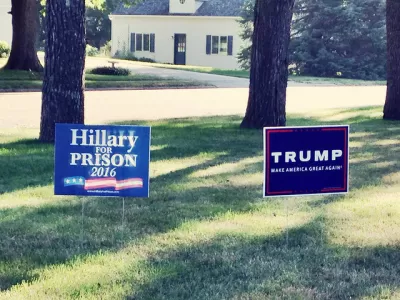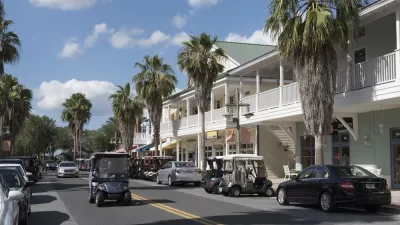Analysis of Trump's favorability ratings with suburban voters and the demographic trends of recent years could doom his recent messages regarding the Democratic agenda for the suburbs.

Since President Trump recently attacked and eventually scrapped the Affirmatively Furthering Fair Housing rule in a move that has been derided as a racist and divisive political stunt that seems unaware of the administration's previous actions, some media commentators have also noted the political shortcomings of Trump's new ploy for the suburbs: the suburbs aren't what they used to be, but not in the way that Trump means it.
Analysis by Emily Badger and Nate Cohn provides data driven analysis of the shifting demographics of the suburbs, finding support for many of the social causes sparking Trump's ire of late. The analysis relies on recent innovations in distinguishing between suburban and urban, based on survey data generated by the U.S. Department of Housing and Urban Development, which in turn expanded on previous survey research by Trulia.
As noted by Badger and Cohn, Trump has been "[playing] on the perceived fears of suburban voters. But there are several reasons to believe that a strategy that worked for Richard Nixon on the heels of urban unrest in 1968 is less likely to be effective for Donald Trump in 2020."
According to data shared by Badger, broken down on the geographic definitions generated by HUD's recent survey, "while polling shows that suburban voters disapprove of the president’s job in general, they disapprove even more of his handling of the very issues he is trying to elevate."
Additional commentators have cited this New York Times analysis to echo the idea that suburban voters aren't following the same political patterns as they did at the end of the 20th century: Eric Levitz for New York magazine and Ronald Brownstein for CNN.
In another article that predates Badger and Cohn's analysis, Jamelle Bouie argues that Trump's political error originates from a slightly different, but relate kind of demographic misunderstanding: that the silent majority, as it existed for Nixon in 1969. Like the suburbs, the silent majority has changed. They are both more diverse, and less likely to support Trump than ever.
FULL STORY: Why Trump’s Blunt Appeals to Suburban Voters May Not Work

Planetizen Federal Action Tracker
A weekly monitor of how Trump’s orders and actions are impacting planners and planning in America.

Congressman Proposes Bill to Rename DC Metro “Trump Train”
The Make Autorail Great Again Act would withhold federal funding to the system until the Washington Metropolitan Area Transit Authority (WMATA), rebrands as the Washington Metropolitan Authority for Greater Access (WMAGA).

DARTSpace Platform Streamlines Dallas TOD Application Process
The Dallas transit agency hopes a shorter permitting timeline will boost transit-oriented development around rail stations.

Renters Now Outnumber Homeowners in Over 200 US Suburbs
High housing costs in city centers and the new-found flexibility offered by remote work are pushing more renters to suburban areas.

The Tiny, Adorable $7,000 Car Turning Japan Onto EVs
The single seat Mibot charges from a regular plug as quickly as an iPad, and is about half the price of an average EV.

Supreme Court Ruling in Pipeline Case Guts Federal Environmental Law
The decision limits the scope of a federal law that mandates extensive environmental impact reviews of energy, infrastructure, and transportation projects.
Urban Design for Planners 1: Software Tools
This six-course series explores essential urban design concepts using open source software and equips planners with the tools they need to participate fully in the urban design process.
Planning for Universal Design
Learn the tools for implementing Universal Design in planning regulations.
Municipality of Princeton
Roanoke Valley-Alleghany Regional Commission
City of Mt Shasta
City of Camden Redevelopment Agency
City of Astoria
Transportation Research & Education Center (TREC) at Portland State University
US High Speed Rail Association
City of Camden Redevelopment Agency
Municipality of Princeton (NJ)





























